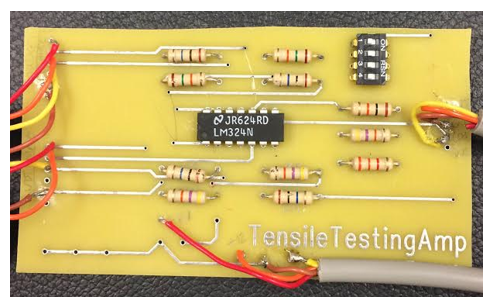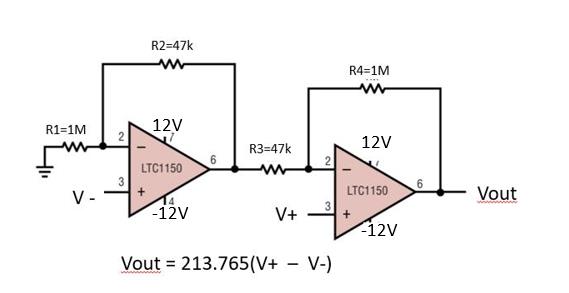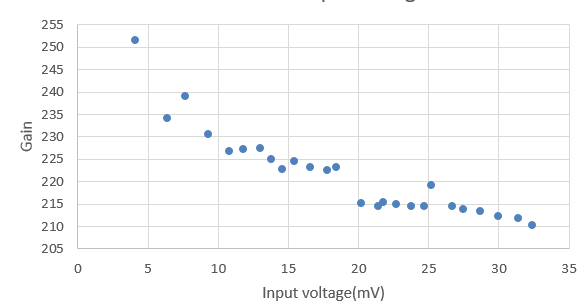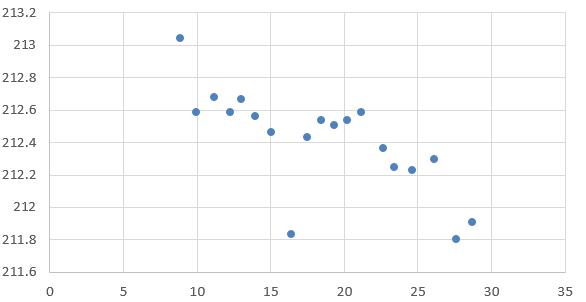Chengjun Li
New Member
I found an amplifier board which was made by someone else several years ago.

The function of this board is to amplify the output signal of a linear displacement sensor in a tensile testing system.
The schematic is shown below.

The ideal gain is 213.765 by using the equation Vout = (V+ - V-) *(R1+R2)/R2 with R4=R1 and R3=R2.(typo, R1=R4=10M actually)
However, I made a simple measurement and found that as the input voltage(V+ - V-) increases, the gain decreases.

There are two sets of instrumentation amp in this board, I test both, and they both show above phenomenon. So I don't think it's the board's problem, I think there must be something I did wrong which lead to this strange result.
The steps I did are like following:
1. I connect the excitation input of the linear displacement sensor to 5V power supply.
2. I connect the signal output of the linear displacement sensor to the V+ and V- of the amplifier board.
3. I power the amplifier board with a 12/-12V dual power supply.
4. I connect the 12/-12V power supply's ground to the ground of 5V power supply.
5. I change the signal output of the displacement sensor(input to the amplifier board) and measure the output of the amplifier board, then calculate the gain.
Could anyone tell me what I did wrong? Why the gain is not stable?
Thanks.

The function of this board is to amplify the output signal of a linear displacement sensor in a tensile testing system.
The schematic is shown below.

The ideal gain is 213.765 by using the equation Vout = (V+ - V-) *(R1+R2)/R2 with R4=R1 and R3=R2.(typo, R1=R4=10M actually)
However, I made a simple measurement and found that as the input voltage(V+ - V-) increases, the gain decreases.

There are two sets of instrumentation amp in this board, I test both, and they both show above phenomenon. So I don't think it's the board's problem, I think there must be something I did wrong which lead to this strange result.
The steps I did are like following:
1. I connect the excitation input of the linear displacement sensor to 5V power supply.
2. I connect the signal output of the linear displacement sensor to the V+ and V- of the amplifier board.
3. I power the amplifier board with a 12/-12V dual power supply.
4. I connect the 12/-12V power supply's ground to the ground of 5V power supply.
5. I change the signal output of the displacement sensor(input to the amplifier board) and measure the output of the amplifier board, then calculate the gain.
Could anyone tell me what I did wrong? Why the gain is not stable?
Thanks.
Last edited:

